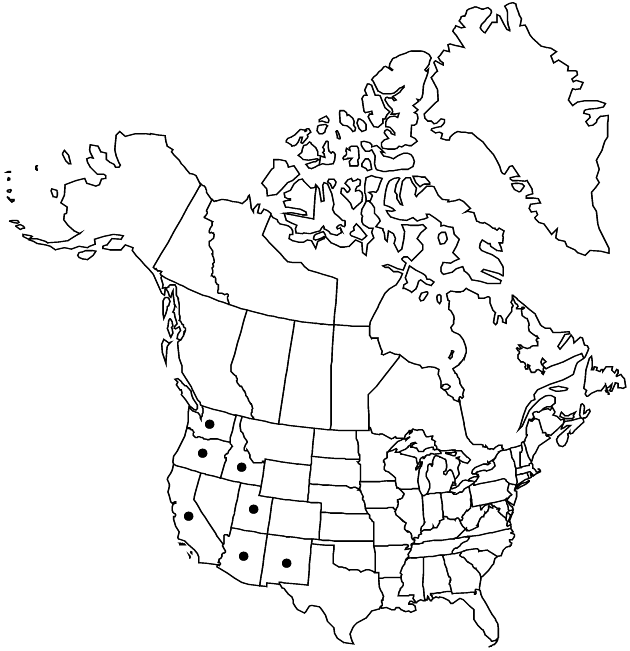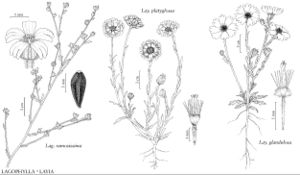Layia glandulosa
Bot. Beechey Voy., 358. 1839.
Plants 3–60 cm (self-incompat-ible); glandular, often not strongly scented, sometimes spice-scented. Stems not purple-streaked (often uniformly dark purple). Leaf-blades obovate to linear, 6–100 mm, margins (basal leaves) toothed to lobed. Involucres ± campanulate to hemispheric, 4–11 × 3–11+ mm. Phyllaries 3–14, apices often shorter (sometimes longer) than folded bases. Paleae in 1 series between ray and disc-florets. Ray-florets 3–14; laminae often white, sometimes yellow or pale-yellow, 3–22 mm. Disc-florets 17–100+; corollas 3.5–6.5 mm; anthers yellow to brownish. Ray cypselae glabrous. Disc pappi of 10–15 usually white (rarely tawny), linear-attenuate to subulate, ± equal scales 2–5 mm, each proximally plumose and often adaxially woolly. 2n = 16.
Phenology: Flowering Feb–Jul.
Habitat: Openings in scrub, woodlands, forests, grasslands, and meadows, gravelly or sandy soils, sometimes dunes
Elevation: 0–2700 m
Distribution

Ariz., Calif., Idaho, N.Mex., Oreg., Utah, Wash., Mexico (Baja California)
Discussion
Layia glandulosa occurs in deserts of western North America, extending to the Pacific coast in central and southern California. As treated here (provisionally) and previously, L. glandulosa corresponds to a paraphyletic group; molecular phylogenetic data have indicated that L. discoidea is most closely related to a subset of lineages in L. glandulosa, including yellow-rayed populations previously recognized as subsp. lutea or var. lutea (B. G. Baldwin, unpubl.). Report of L. glandulosa from British Columbia has not been confirmed.
Selected References
None.
